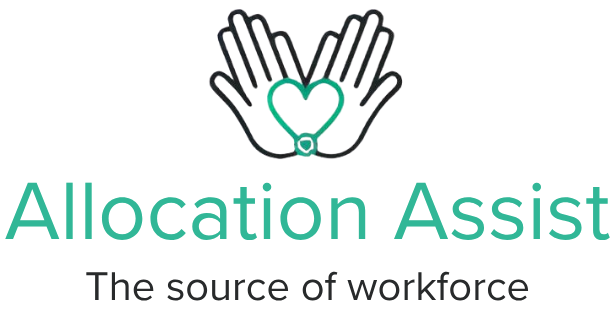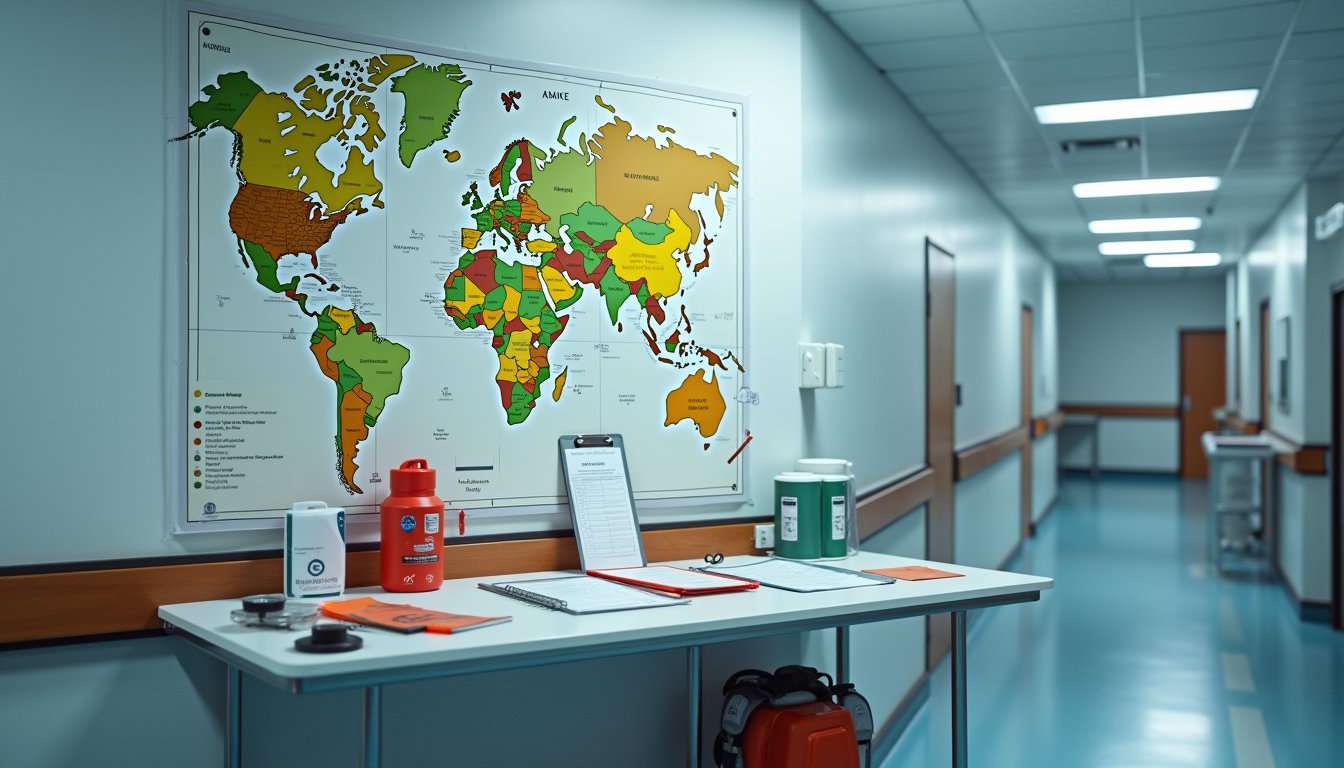Healthcare careers offer exceptional value in 2025, with 1.9 million annual job openings projected through 2033 and median wages of $80,820 surpassing national averages. You’ll find strong job security, as the sector maintains a low 4-4.2% unemployment rate. Advanced practice roles are seeing unprecedented growth, with nurse practitioners expecting 46% increased demand and signing bonuses averaging $43,034. The expanding aging population and technological innovations create even more opportunities for those exploring this dynamic field.
The Current State of Healthcare Employment

While healthcare employment continues to show resilience, the sector’s growth has moderated from its post-pandemic surge. The industry added 43,700 jobs in January 2025, below 2024’s monthly average of 57,000, though April 2025 showed stronger gains with 51,000 new positions. This pattern reflects the healthcare sector’s sustainability despite economic fluctuations. Dental offices contributed 8,000 new positions to the healthcare workforce expansion. With the aging nursing workforce and 28% planning retirement within five years, healthcare organizations face mounting pressure to recruit new talent.
You’ll find workforce resilience varies by sector. Hospitals and ambulatory facilities lead growth, adding 22,000 and 21,000 jobs respectively in April 2025. However, outpatient care centers lost 2,400 positions in January 2025, while home health services gained 10,600 jobs. The employment landscape has evolved since COVID-19, with physicians’ offices, outpatient centers, and home health services now exceeding pre-pandemic levels, demonstrating the industry’s adaptability to changing healthcare delivery models.
Growth Projections and Market Demand
Despite recent economic uncertainties, healthcare sector growth projections paint an optimistic picture for 2025 and beyond. You’ll find strong market trends supporting career stability, with 69% of executives expecting revenue growth and over 70% projecting improved profitability. Employment projections are particularly promising in healthcare services and technology, which is set to grow at a 9% CAGR through 2028. The integration of advanced AI algorithms in healthcare systems offers expanding career opportunities for technology specialists. The outpatient care sector shows notable growth potential as site-of-care shifts drive increased demand for ambulatory surgery centers.
You can expect significant opportunities in specialized areas like AI implementation, digital health solutions, and behavioral health integration. The sector’s financial outlook shows a healthy 7% CAGR in EBITDA through 2028, while employers’ healthcare spending is projected to rise by 8%. These indicators, combined with the increasing demand for technology-driven healthcare solutions and specialized care delivery, suggest robust career prospects across multiple healthcare disciplines. Talent acquisition remains a critical focus as workforce shortages continue to affect the industry, with 58% of health system executives expecting staffing challenges to influence their strategies in 2025.
Top Healthcare Roles With Promising Futures

Looking ahead to 2025, you’ll find exceptional growth potential in clinical positions like Nurse Practitioners and Physician Assistants, with their expanded scope of practice and rising median salaries above $100,000. Physical therapists deliver outstanding income potential and career stability with a median annual wage of $101,020. You can pursue specialized certifications in emerging fields such as telehealth coordination and health informatics, where the integration of technology with healthcare delivery is creating new career pathways. Remote healthcare opportunities are expanding rapidly, with roles in EHR management, medical coding, and cybersecurity offering flexible work arrangements while meeting the increasing demand for digital health services. The healthcare industry offers numerous accelerated training programs, with medical assistant certifications taking just six months to complete, providing quick entry into the workforce. Nurse anesthetists are experiencing remarkable career prospects with 40% job growth projected until 2033, making it one of the fastest-growing healthcare specialties.
High-Growth Clinical Positions
The healthcare industry’s most promising clinical positions show remarkable growth projections through 2025, led by Nurse Practitioners with a 46% expected increase in demand. You’ll find exceptional opportunities in high demand roles like Nurse Anesthetist and Nurse Midwife specialties, which are projected to grow by 40%. Physician Assistants aren’t far behind, with an anticipated 28% growth rate.
Career adaptability is essential as the healthcare landscape evolves. You’ll need to stay current with emerging clinical technologies and specialized care protocols. Certified Medical Assistants are experiencing rapid job growth at 15% above average. While traditional nursing roles remain stable, advanced practice positions offer the strongest growth potential. Addressing persistent staffing shortages has become a top priority across healthcare facilities. These projections reflect the industry’s shift toward specialized care delivery models and the increasing need for advanced clinical practitioners who can provide thorough patient care. This growth is largely driven by the graying of America, with an aging population requiring more comprehensive healthcare services.
Specialized Certification Pathways
Professional advancement in healthcare now hinges on specialized certifications that provide access to higher-paying roles and expanded practice authority. To accelerate your healthcare advancement in 2025, you’ll need to target key certification pathways aligned with emerging technologies and care models.
Telehealth certifications have become essential, particularly in remote diagnostics and virtual patient engagement. The CHIS credential positions you for AI integration and data analytics roles, while ARRT and specialized imaging certifications grant access to higher-tier radiography positions. Radiologic technologists must obtain both Primary Eligibility Pathway certifications to qualify for entry-level positions. For executive trajectories, the FACHE credential validates your strategic leadership capabilities. International medical graduates can pursue ECFMG Pathway 6 for U.S. practice validation. Many employers now offer certification sponsorship to support professional development and retain talented staff. Professionals seeking to enhance patient relationships can obtain emotional intelligence certifications for improved healthcare delivery.
These specialized certifications directly correlate with increased earning potential and expanded scope of practice across all healthcare domains.
Remote Healthcare Career Options
Remote healthcare roles have surged dramatically, with high-paying remote positions growing 18.54% in late 2024 and total remote healthcare jobs expanding to 10.6% of available positions. This telehealth expansion has transformed the industry, with projections showing 25% of healthcare jobs evolving to remote work by 2025. Healthcare organizations are experiencing significant cost savings by reducing their physical footprint and on-site staffing requirements. With only 82% on-site roles remaining in healthcare support positions, the shift to remote work continues to accelerate.
- Mental health services lead remote roles, with 70% of providers adopting teletherapy as their primary delivery method
- Medical billing and coding specialists benefit from 40% remote-compatible workflows
- Primary care and nurse practitioner positions increasingly leverage telehealth platforms, with 30% of consultations becoming virtual by 2025
- Patient registration specialists utilize AI tools for automated form processing and insurance verification, streamlining remote operations
This shift offers unprecedented flexibility while reducing facility costs and improving patient retention across 50% of healthcare markets.
The Impact of Demographics on Healthcare Jobs

As you’ll find today’s healthcare landscape shifting, the aging population of baby boomers will create significant workforce vacancies by 2025, with 47% of male physicians currently aged 55 or older. You’re witnessing a transformation in care delivery needs, as aging demographics drive increased demand for chronic and preventive services, particularly in home and outpatient-based settings. Your career opportunities will expand in response to these demographic changes, with projections showing growth across multiple specialties to serve diverse patient populations, while addressing the current 61.1% male to 38.9% female physician ratio imbalance.
Aging Population Drives Growth
The dramatic surge in America’s elderly population will reshape healthcare employment through 2025 and beyond. With seniors projected to reach 82 million by 2050, you’ll find unprecedented opportunities in aging care innovations and geriatric workforce needs. The worker-to-senior ratio will drop to 2.9:1 by 2030, creating urgent demand for specialized professionals.
- Home-based care will expand 22% through 2034, driving job growth in telehealth and care coordination
- Cardiovascular and neurology services will surge 25% and 23% respectively, requiring specialized expertise
- Long-term care coordinators and case managers will be critical as chronic disease management needs intensify
- AI-powered geriatric care tools will create new roles in technology-enabled senior care services
This demographic shift means you’ll have diverse career options in both traditional and emerging healthcare roles.
Generational Care Needs Evolve
Building on the aging population trends, modern healthcare delivery spans multiple generations with distinct care preferences and technological aptitudes. You’ll need to adapt to generational shifts, as 23% of healthcare workers are over 55, while younger patients increasingly demand virtual care options and tech-enabled services.
These care preferences are reshaping delivery models, with over 24,200 new ambulatory service positions added in early 2023. You’ll encounter diverse patient demographics requiring personalized treatment approaches that integrate lifestyle data and socioeconomic factors. To succeed, you’ll need cultural competency training and digital literacy skills to effectively use AI-driven tools and virtual care coordination platforms. The industry’s focus on preventive, value-based care means you’ll need expertise in population health management and risk stratification across generations.
Multi-Demographic Workforce Demands
While healthcare remains largely female at 79.9%, significant demographic challenges are reshaping the workforce landscape. You’ll find a more diverse workforce emerging, with 35.6% White, 24% Black/African American, 23.4% Hispanic/Latino, and 10.5% Asian providers. Inclusive hiring practices must address the reality that 23% of healthcare workers are over 55, creating urgent succession planning needs.
- Your employment opportunities expand as 5.9% of workers aged 65+ approach retirement
- You’ll need higher education credentials, as only 24% currently hold bachelor’s degrees
- Your career options grow in technical roles facing critical staffing shortages
- Your global mobility increases with 78% of nurses concentrated in countries representing just 49% of the population
Certification Requirements and Career Advancement
As healthcare evolves toward 2025, certification requirements have become increasingly technology-focused and specialized, with 87% of employers now demanding multiple credentials from their clinical staff. You’ll find certification pathways now emphasize digital competencies, particularly in telehealth and EHR systems, alongside traditional clinical skills. The ECFMG’s new requirements for international medical graduates and USCIS mandates for foreign-trained professionals reflect this shift toward standardized, technology-integrated credentials.
Career changes within healthcare now require continuous updating of certifications, especially in emerging areas like AI integration and cybersecurity. You’ll need to demonstrate proficiency in sustainable healthcare practices, as Joint Commission’s 2025 standards mandate resource efficiency tracking and decarbonization initiatives. These evolving requirements create clear progression paths while ensuring healthcare professionals maintain current, relevant skills.
Salary Trends and Financial Benefits
Despite ongoing healthcare industry changes, compensation trends show robust growth across all practitioner levels in 2025. Your salary negotiation leverage has increased considerably, with physicians now averaging $376,000 annually and specialists reaching $394,000. Advanced practice professionals are experiencing unprecedented growth, as NPs command $130,000 on average with specialty roles exceeding $160,000.
When evaluating compensation packages in healthcare, consider these key trends:
- Signing bonuses average $43,034, with 42.8% exceeding $50,000
- Locum tenens positions offer $150-$250 hourly rates, potentially surpassing $400,000 annually
- Hospital systems are implementing standardized pay scales with 3-12% raises
- NP salaries have increased by $24,489 over four years, driven by expanded practice laws
Your earning potential in healthcare considerably outpaces the national median wage of $48,060, making it a financially rewarding career choice.
Work-Life Balance in Healthcare Professions
As you explore healthcare career options for 2025, you’ll find that flexible scheduling has become an essential factor, with organizations reporting 85% higher productivity through work-life balance initiatives. Your ability to maintain career growth while managing personal time will depend heavily on choosing employers who offer wellness programs and reduced workweek options, especially given that 65% of healthcare professionals currently report high burnout levels. The adoption of hybrid schedules and technology-enabled workflows is transforming traditional healthcare roles, making it possible to advance professionally without sacrificing the personal time that prevents the 35% increased stroke risk associated with overwork.
Flexible Scheduling Options
Three seismic shifts have transformed flexible scheduling from a workplace perk to a fundamental expectation in healthcare careers. With 98% of healthcare leaders reporting increased demand for gig-style roles, workplace flexibility has become non-negotiable for talent attraction and retention. You’ll find that 96% of organizations now link scheduling autonomy to improved nurse retention rates.
- 78% of nurses rank flexibility as their top priority when making career decisions
- 94% of leaders correlate flexible schedules with enhanced patient care delivery
- Organizations offering flexible models report considerably lower burnout rates
- Tech-enabled platforms are revolutionizing how healthcare workers manage their schedules
The data shows that healthcare organizations embracing flexible scheduling gain a competitive advantage, with evidence pointing to higher staff satisfaction, reduced burnout, and better patient outcomes. This trend will continue shaping healthcare careers through 2025 and beyond.
Career Growth Vs Time
While healthcare careers offer unprecedented growth opportunities through 2025, professionals face an intensifying challenge balancing career advancement with personal well-being. You’ll encounter 1.9 million annual job openings, but maximizing career satisfaction often requires considerable time investments through advanced degrees, certifications, and continuing education requirements.
You’re looking at mandatory bachelor’s degrees for many roles, plus additional specialized training and residency programs that can extend your timeline to full practice. While AI tools and automated systems help streamline workflows, you’ll still need to dedicate time to master new technologies and maintain certifications. Job flexibility varies greatly roles like nurse practitioners face intense workloads despite work-hour caps, while telemedicine options may offer more scheduling control but require constant availability for patient care.
Technology’s Role in Healthcare Careers
Technology’s transformative impact on healthcare careers centers around five key innovations: telehealth platforms, AI-assisted diagnostics, 5G connectivity, smart surgical tools, and automated workflows. Healthcare innovation is rapidly reshaping traditional roles, with technology integration becoming a core competency across all specialties.
Technology is revolutionizing healthcare through key digital innovations, fundamentally changing how medical professionals work and deliver patient care.
- Remote patient monitoring systems with ultra-high bandwidth (10 Gbps) enable you to track patient health in real-time
- AI-assisted diagnostics enhance your diagnostic accuracy while reducing analysis time by up to 30%
- Smart surgical instruments provide you with real-time data and AR overlays during procedures
- Administrative AI apprentices handle 40% of routine tasks, allowing you to focus on patient care
You’ll need to adapt to these technological advances to remain competitive, as they’re becoming standard practice rather than optional tools in healthcare delivery.
Job Security and Long-Term Stability
Based on recent employment data, healthcare careers offer exceptional job security and growth potential through 2025 and beyond. You’ll find remarkable stability in a sector projecting 1.9 million annual job openings through 2033, with unemployment holding steady at 4-4.2%.
The sector’s long-term stability is evident in consistent monthly gains, averaging 57,000 jobs in 2024. You’re looking at median wages of $80,820 for healthcare practitioners, considerably higher than the $48,060 national average for all occupations. With healthcare employment spanning hospitals, outpatient care, and home health services, you’ll benefit from diverse opportunities across multiple settings. The aging population ensures sustained demand, while expanding roles in specialized care and diagnostic services provide additional paths for career advancement and job security.
Training Pathways and Educational Requirements
As healthcare roles evolve rapidly through 2025, you’ll find diverse training pathways aligned with industry demands and technological advancement. Training innovations now include accelerated programs, hybrid learning models, and modular credential stacking, making educational accessibility more attainable than ever.
- You can complete ICH’s accelerated programs in under a year, enabling quick career shifts without long-term commitments
- The CPT Program offers tuition-free training with a 3-year service commitment in Medicaid-focused positions
- Hybrid learning combines in-person foundational skills with virtual technical instruction, particularly in medical call center training
- Progressive credential stacking lets you build expertise systematically, from medical terminology to specialized certifications
Core competencies still include HIPAA compliance and EHR systems, while emerging certifications in telehealth and AI-assisted administration reflect healthcare’s digital transformation.
Frequently Asked Questions
How Do Healthcare Careers Impact Personal Relationships and Family Planning?
Healthcare careers greatly affect your work-life balance, with 33% of professionals working Saturdays and irregular shifts disrupting family routines. You’ll face relationship strain due to long hours, as working 55+ hours weekly increases depression risks. Sleep disturbances impact over two-thirds of workers, reducing energy for personal relationships. However, emerging flexible scheduling options and remote work possibilities are helping professionals better manage family commitments, with 5% productivity improvements noted in workplaces offering flextime.
What Mental Health Support Resources Are Available for Healthcare Professionals?
You’ll find extensive mental health resources designed specifically for healthcare workers, including 24/7 SAMHSA helplines and NAMI peer support networks. Digital platforms now offer stress management tools that have shown 50% reduction in burnout symptoms. Through community clinic partnerships, you can access on-site counseling and brief group therapy sessions. Telehealth options have expanded, making it easier to connect with mental health professionals during off-hours while maintaining confidentiality.
Can Professionals Easily Transition Between Different Healthcare Specialties Mid-Career?
You’ll find significant specialty flexibility in healthcare, with success rates varying by your change path. Certifications and additional training can open doors 84% growth in behavioral health and doubled midlevel clinician roles show promising opportunities. Your career adaptability depends on your willingness to pursue specialized education and licensing requirements. Cross-specialty moves are easier within related fields (like outpatient to telehealth) than dramatic shifts (like surgery to psychiatry).
How Do International Healthcare Qualifications Transfer to the US Market?
You’ll need to navigate several key steps to transfer your international healthcare credentials to the US market. First, obtain credential evaluation from approved agencies to verify your qualifications match US standards. Then, meet specific licensing requirements, which typically include completing ECFMG certification and US residency for physicians. Over 85% of international medical graduates must complete 3-5 years of additional training, regardless of their home country experience.
What Are the Risks of Malpractice Suits in Different Healthcare Roles?
You’ll find malpractice risks vary considerably by specialty, with surgeons and OB/GYNs facing the highest exposure. Around 80-90% of cases settle before trial, but when cases do go to court, plaintiffs win 21-30% of the time. Your malpractice insurance costs will reflect these risks, with premiums averaging 8.1% higher in 2022. Legal education and risk management training are essential, as recent verdicts have reached $70M in Georgia and $60M in New York.









